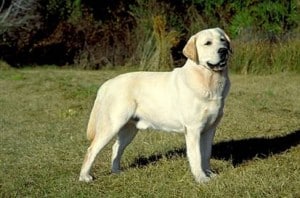Thursday, February 27, 2014
Hello everyone!
This is Sharda again for another Labrador Retriever newsletter.
Let’s have a look at the Labrador Retriever History and early beginnings.
The Labrador Retriever originally came from Newfoundland, Canada, and was known as the “St. John’s Dog”, “St. John’s Newfoundland”, or “Lesser Newfoundland”.
Although there are several different accounts of the early history of the breed, it is most widely speculated that the Labrador’s origins can be traced to the Greater Newfoundland dog or to the French St. Hubert’s dog.
The name Labrador was first given by the Earl of Malmesbury ,as a way to differentiate the breed from the Newfoundland dog.
The Newfoundland dog was primarily used for hauling, while the Labrador was used for retrieving and was known for its smaller size and short black coat. Malmesbury wrote that his dogs were “known by their having a close coat which turns the water off like oil and, above all, a tail like an otter.”
Early Labradors were trained to swim through icy waters, in order to haul the fishermen’s nets into shore or to retrieve fish that had fallen off the fishermen’s hooks. The dogs were seen as “workaholics” and were excellent not only at retrieving birds and fish, but also at pulling small boats.
The strong swimming dogs were small enough for the two-man “Dory” boats, and had short coats that repelled water and ice. Also adept at hunting, the Labrador was able to help the fishermen supplement their fish diet with fowl.
Ships coming from Labrador (located to the Northwest of Newfoundland) brought the dogs to England in the early 1800’s, where the breed continued to evolve by learning the fine retrieving instincts for which Labrador Retrievers are known today.
English sportsmen were very impressed with the Lab’s excellent hunting and swimming ability, and as organized shooting events became more popular, the gentry replaced their pointers and setters with the Labrador Retriever.
Labrador Retrievers in England almost became extinct at one time, mostly due to political reasons. With the introduction of the English Quarantine law and the heavy dog tax, the importation of Labradors into England practically stopped.
As a result, other types of retrievers were eventually interbred with the dogs. Fortunately, however, the strong Labrador characteristics stood out, and eventually an anti-interbreeding law was written.
Early on, Labrador breeders weeded out chocolate and yellow labs, preferring only black ones. Eventually all three varieties were accepted. The Labrador Retriever breed was first recognized by the Kennel Club of England in 1903, when the decision was made at that time to give classes at the Kennel Club Show for Labradors as their own, separate breed.
The Labrador Retriever was recognized by the American Kennel Club in 1917. However, in 1927 there were only 23 registered Labradors.
But in 1928, the magazine American Kennel Gazette ran an AKC article entitled “Meet the Labrador Retriever”, making the breed more popular. After World War I, many of the English Labradors were imported, and they eventually formed what is now known as the American variety.
In 1938, the black Lab “Blind of Arden” won the top US Retriever honour, and was the first dog ever to appear on Life Magazine’s cover. In 1959, a famous black Lab, “King Buck” was the first dog to appear on a U.S. stamp.
Other famous Labs include “Buddy” and “Seamus”, U.S. President Bill Clinton’s two pets, and Russian President Vladimir Putin’s “Koni”. A black Labrador named “Sadie” detected a bomb in Afghanistan, saving the lives of a number of soldiers. She in turn received the Dickin Medal of Honour.
Labs have evolved into a popular American breed, effective as service animals in both competition and drug detection. By 1991, Labrador Retrievers were listed as the top breed among AKC registrations.
In 2005, the American Kennel Club registered more than 137,000 Labrador Retrievers, putting the breed well ahead of Golden Retrievers – who hold second place in registrations.
As in the early days in England, once they are trained in hunting and retrieving today’s Labs continue to be a hardworking breed. It is not uncommon for the dog to break ice to go after a bird and then return to his owner, waiting for the next bird to fall.
In warm weather, the dog may tend to work beyond his physical stamina and overheat if not watched carefully. Labs continue to be wonderful family pets, as well as renowned sporting dogs.
I hope you learned a lot with today’s Labrador Retriever newsletter.
Wishing you great success with your Labrador.
Warmly,
Sharda Baker

